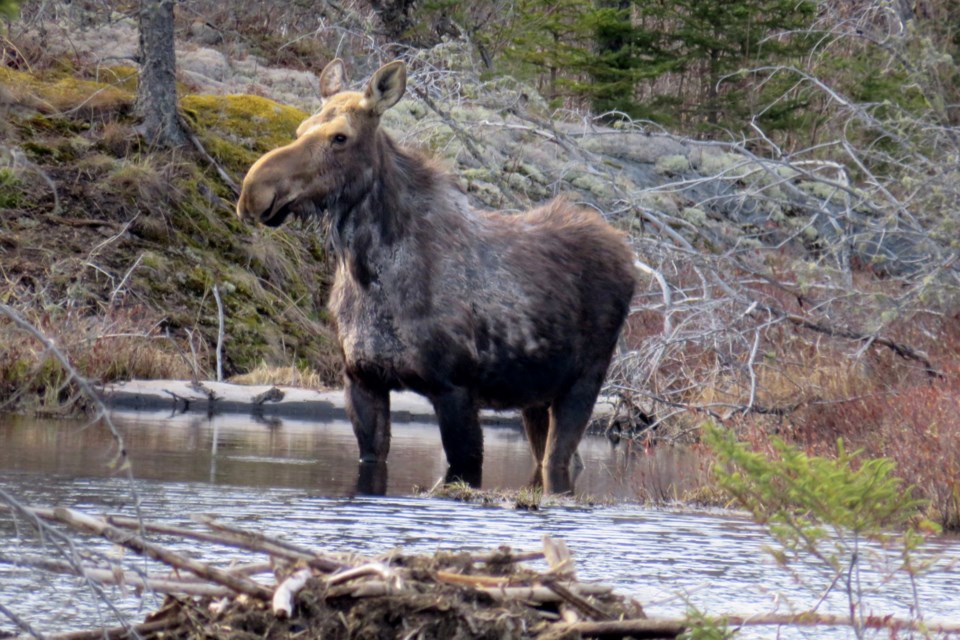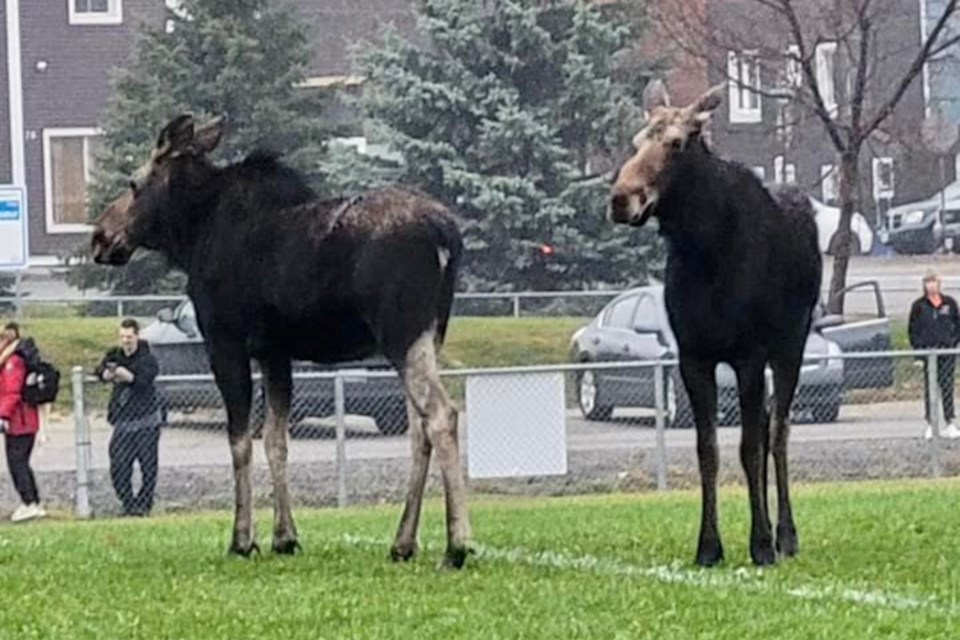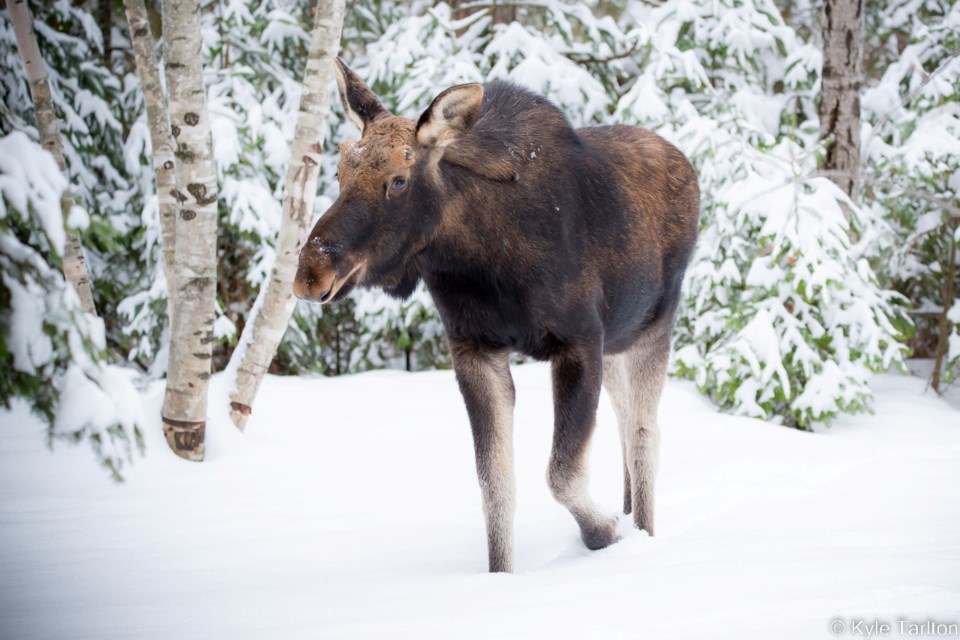My recent article was well received and I hope stimulated folks to send their concerns to the Ministry of Natural Resources.
I had expected to hear some alternatives to my proposals, but there have been none so far. I appreciate that people must be getting tired of my moose musings, but MNR has often been criticized for failing to communicate effectively. I guess I am trying to fill in where they are failing.
There is another item I’d like to address, and that is the point system along with an explanation of how a “moose management system” functions.
I’ve heard from hunters who are unhappy with the point system. I can understand that. But I want to try to make certain that people understand the implications of such dissatisfaction and be sure that they are directing their criticism to the proper component of the system.
Often, when I hear people talk about problems with the moose management system, it sounds something like: “When I put my foot on the brake, the car doesn’t stop. I better have the carburetor adjusted.” Folks don’t understand what the parts are and how they are supposed to work together to create an effective system.
This confusion occurs among MNR staff as well. Recently a retired biologist said, “If you want to reduce the cow harvest, why don’t you just raise the points required to get a tag?” It would mean hunters would go a longer time without a tag, but nothing would be done to reduce the harvest. Tags control the kill. Points distribute the tags.
Moose management system explained
In that regard, I’d like to explain the components of the moose management system and their function.
“Aerial inventories” estimate the population size. “Harvest planning guidelines” (preferably based on adaptive management) set the rules for the harvest and result in the number of tags to be offered.
These guidelines must include a “harvest control mechanism” (strategy) that provides direct and predictable control on the harvest, so the actual kill does not exceed the plan. A “tag distribution system” (discussed below) puts the tags into the hands of hunters.
Prior to 2021, “Group Applications” permitted a party to get only one tag by voluntarily removing members from the draw. This ensured they had more members in Pool 1 the following year.
Now, there is a very inefficient two-step application process where hunters apply as individuals and don’t claim tags they don’t want. There is a proposal to make this more confusing.
Group application does not legally require the applicants to hunt together. It is an application tool, not a hunting tool. Members are free to hunt with anyone who has a tag.
“Guaranteed Group Size” helped reduce the uncertainty of a party getting a tag before applying. It became obsolete as tag numbers dropped and party size became exceedingly large.
A “Tag Transfer Policy” ensures that the party can hunt if the tag holder cannot for legitimate reasons (death, illness, etc.). “Hunter Reporting Surveys”, now Mandatory Reporting, determines the actual harvest and related information that may be used as indices to the population, wolves, etc.
A computer information file, formerly called “MOOSEHARV”, tracked the harvest planning process and was used to compare the planned and actual harvests for adaptive management purposes. That meant learning what was right and what was wrong, and changing the plan for the next season if necessary.
I’m not sure that the comparison aspect still exists. It wasn’t provided as part of the information I got through the Freedom of Information Act. If it does still exist, it doesn’t seem like anyone is paying attention to it because there is no evidence of adaptive management. Each component has a specific purpose and cannot be interchanged.
On the point system

So, let’s discuss the point system that hunters don’t like.
The first question I’d ask is: ”What is the alternative?” I can think of two. I’m sure there are others.
The first one is to “sell” tags to the highest bidder. There are several ways to do this. Yes, I know that it is absolutely unacceptable to hunters, but it is one option. The other is a random draw. That was how the selective harvest program started. Because parties got too many tags or not enough, it led to group applications and a tag transfer policy that was seriously abused.
That first draw, a two-level preference pool, was a “random draw with replacement”. Tags were allocated to those in Pool 1 first. Successful tag holders “waited out” for a year and then were replaced back in Pool 1.
Lucky hunters got tags every other year or so, while some hunters waited well beyond the expected average. The average time was increased by two years.
About 1999, I spoke with one hunter who had gone 13 years in a unit where the odds were one in four. About 1996, (see reference below) a question was asked about changing the two-level preference pool to a three-level pool to increase fairness.
At the time, this would have helped a few units, but not others, so the possibility of a multi-level pooling system was born. Each unit would have its own level of pools to better distribute tags among hunters. This, of course, is exactly what a point system is, except that the “levels” are applied to the tag type, not the entire unit.
I guess the decision rests on whether hunters want a “chance” of getting a tag by returning to the random draw preference pool system (with group applications and the original tag transfer policy), the certainty and fairness of an effectively managed point system (with group applications and the original tag transfer policy), or a more confusing three-step process (with a user unfriendly tag transfer policy).
In a private message, a colleague suggested that parties should be able to pool their points to get tags.
Clearly, larger parties would get most of the tags. I was confused with some of the details, but a certain percentage of tags were to be held back for individual applicants. Aside from the confusion, the “hold back”, which appears to be an arbitrary value, must be determined for each tag type in each WMU.
This proposal would be extremely difficult to manage, complicated to understand, and offered no advantage over a simple point system with group applications. If there are X tags available, they go to the X people with the highest points, using group applications to protect other high point holders in the party. What could be simpler?
Again, there was confusion regarding the function of the management system. This colleague couldn’t understand why it took four points for a bull tag in the gun season and six points in the archery season. The answer is that it depends on the number of tags and the number of applicants.
Points are not used to “buy” tags. They are used to distribute them. Given the same number of tags, with more applicants, it takes more points to get a tag.
Lack of moose is the problem

When I discuss the point system with hunters, what I generally discover is that they aren’t really upset about the point system as much as they are upset by the fact that they only got a calf tag or a bull tag with 15 or 20 points.
The real issue is not points as much as it is the lack of moose, resulting in a lack of tags. Basically, hunters are ticked off by the failure of the entire management system to rebuild the moose population or to provide the abundance of opportunities experienced in the past.
They are taking it out on the wrong component — points. Generally speaking, none of the components are seriously wrong. With a few exceptions, it is an excellent system.
In fact, I’d say it had the best potential of any system I’ve seen in North America to create a fantastic moose population and the benefits it would produce.
What is wrong is that MNR staff don’t understand the components or are failing to use them effectively. The current tag distribution system is a mess and will get messier if the proposal is implemented.
MNR has failed to create and use effective harvest planning guidelines and have failed to implement direct and predictable control on the harvest. The population will continue to decline unless these are corrected. My recommendation is that hunters stop blaming the system and blame the managers who are failing to use it effectively to rebuild the moose population.
There is one other small point I’d like to correct. A person commented something to the effect that without a tag, old hunters wouldn’t be able to hunt, and young hunters would have to wait years for the opportunity.
That is grossly incorrect.
Under party hunting rules, it was when tags were only for adult moose, and still is the law that anyone can hunt and kill a moose without a tag. They do it under the authority of a tag held by someone else. Tags are intended to control the harvest. Tags only convey the privilege of claiming a moose that may be hunted by any number of hunters and killed.
Alan Bisset is a retired regional moose biologist and wildlife inventory program leader with the former Ministry of Natural Resources. He has written and published many papers on moose management, both Internally and in scientific journals. Bisset lives in Strathroy, west of London, Ontario. You can find his other submissions by typing “Alan Bisset” into the search bar at Sudbury.com.
References:
BISSET, ALAN R., JOHN J. BEECHIE and JOHN BARBOWSKI. 2003. The point system: an alternative to preference pooling within the resident draw for adult moose validation tags. Northwest Sci. and Info. Thunder Bay, Ont. NWSI Report IR-005. 149 pp. Not published. This was a revised version of a 1996 paper with an introduction correcting errors made in the 1997 review by Simpson.
